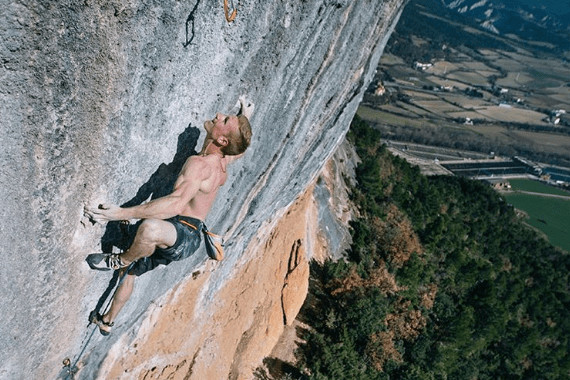Story 1: President designates Bears Ears National Monument
On December 28th, 2016, President Obama officially designated 1.35 million acres of land around the Bears Ears region of southeast Utah as the nation’s 29th National Monument. The designation has been lauded as a huge victory for native peoples, environmentalists, and recreational users (including climbers) alike. Consider reading the proclamation itself to get a full understanding of what it entails.
As The Access Fund pointed out in a recent article,
This is the first national monument proclamation to specifically acknowledge rock climbing as an appropriate and valued recreation activity.
This comes as excellent news to thousands of climbers who visit the crack climbing mecca of Indian Creek every year, which is included within the monument boundary.
But not everyone is overjoyed by the prospect of a new national monument. All Utah Republican legislators opposed its implementation. Utah Rep. Rob Bishop led the opposition with his Public Lands Initiative, a complex piece of legislation meant to function as a compromise between tribes, conservationists, landowners, and private interest groups. The PLI would place millions of acres of land under the control of the state of Utah—some would be conserved, the rest potentially sold to private interest groups for resource development and extraction.
As this informative article from The Atlantic notes, however, Bishop had trouble finding national support for his measure, which died in the House of Representatives last September. Given recent looting and vandalism of native artifacts from the Bears Ears region, Obama used the power bestowed upon the president by the American Antiquities Act of 1906 to place the area under federal protection.
The following video from the Salt Lake Tribune provides perspective from a few key representatives on each side of the issue. You may recognize Heidi Redd, owner of the Indian Creek Cattle Company, as one of those voices:
Now that Indian Creek and other climbing areas are protected within the Bears Ears National Monument, it’s essential that we climbers demonstrate the value of our community to all the parties involved. We should take the advice given by Brady Robinson, executive director of The Access Fund, in an interview with Alpinist:
“Climbers should continue to give back, to be the most responsible users of the land they can be, participate in the democratic process, be ready to weigh in when the time comes. From what I’ve seen, climbers generally have a great reputation for doing all these things. Let’s keep it up.”
Story 2: Jakob Schubert continues Oliana rampage
Austrian powerhouse Jakob Schubert rang in 2017 by sending Pachamama (9a+/5.15a, FA Chris Sharma) in Oliana, Spain on January 1st. And if the subtle indications from his Instagram caption can be believed, he was probably somewhat hung over at the time.
Schubert’s feat comes only a week after sending Joe Mama (9a+/5.15a, FA Klemen Bečan) and two years after dispatching Fight or Flight (9b/5.15b, FA Chris Sharma), both at the same crag.
With top-level ascents in sport climbing and bouldering, and a slew of podiums on the competition circuit, Schubert continues to build his reputation as one of the best all-around climbers in the world.
Check out the video of Jakob sending the stunning Bügeleisen Sit (8C/V15, FA Nalle Hukkataival) below:
Story 3: Ranulph Fiennes Vies for Global Reach Challenge
Famed British adventurer Ranulph Fiennes has set his sights on a challenge no human being has ever completed–crossing both of the planet’s polar ice caps and climbing the Seven Summits.
Fiennes has dubbed his extraordinary mission the Global Reach Challenge, set up as a fundraising campaign for the Marie Curie Nurses organization. After losing his first wife to cancer twelve years ago, Fiennes recognized the importance of the “vital work” Marie Curie does in caring for terminally ill patients. All proceeds towards his Global Reach Challenge go directly to Marie Curie.
With both ice caps and three of the summits out of the way (including Everest), Fiennes has chosen South America’s Aconcagua as his next target. But at 72 years old—and with multiple heart attacks and a double bypass surgery under his belt—the 22,841-foot peak is daunting.
“While other people my age are sensibly enjoying their retirement, I’m taking this challenge,” Fiennes says on his JustGiving campaign page. “It unfortunately really isn’t going to be easy.”
Learn more about Sir Ranulph Fiennes on his website.
Want more climbing content? Get our awesome climbing newsletter, delivered weekly.
Explore more
- Our 30+ most popular articles ever
- Climbing News: A Roundup of What’s Happening Out There (12/21/16)
- Video: Defined by the Line—Preserving the Climbing of Southeastern Utah
- Today’s Best Climbing Gear Sales
- President Obama and the White House Show Love to Rock Climbing
- World’s Fastest Woman: Masha Gordon on the Seven Summits, Business, Motherhood
- 5×5 Revelations with Chris Sharma
- 5 Climbing Organizations You Should Care About
- Get daily updates by Liking us on Facebook
- Free rock climbing PDFs on technique, training, knots, and more








